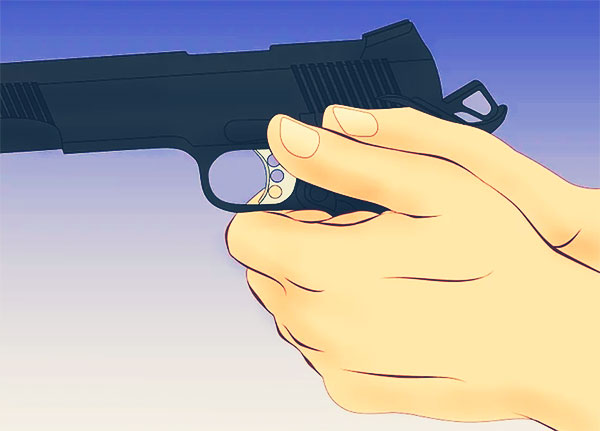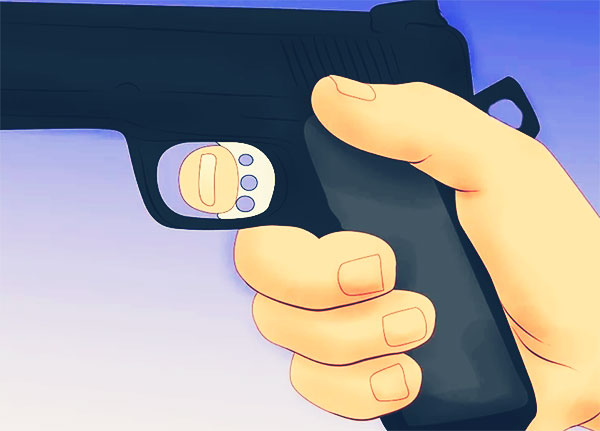One of the most important things to consider when gripping a gun is maintaining good control over the weapon. There are several ways to do this, but one of the most effective is to hold the gun in your dominant hand while supporting it with your non-dominant hand. This will help you keep the gun steady and prevent it from moving around too much when you fire it.
It’s also important to keep your finger off the trigger until you’re ready to shoot. Many accidents occur because people inadvertently put their finger on the trigger before they’re prepared to fire, so make sure that doesn’t happen by keeping your finger above or alongside the trigger until you’re ready to pull it.
Finally, make sure you have a good grip on the gun before you start shooting. A loose grip can cause the gun to move around in your hand and make it harder to hit your target. So take a firm hold of the gun and be ready to shoot before you pull the trigger.
There are a few different ways to grip a gun properly, depending on the type of gun you are using. For handguns, the most common grip is called the two-handed or Weaver stance. To do this, hold the gun in your dominant hand and place your other hand underneath, supporting the gun from below. Make sure that your fingers are not wrapped around the trigger guard, as this can impede your finger’s movement and prevent you from firing accurately. For rifles and shotguns, it is best to use the one-handed grip, with your dominant hand holding the gun at its midpoint. Place your other hand further down the barrel to help stabilize it when you fire. Again, make sure that your fingers are not wrapped around the trigger guard.
There are a few different ways to grip a gun properly, depending on the type of gun you are using. For handguns, the most common grip is called the two-handed or Weaver stance.
To do this, hold the gun in your dominant hand and place your other hand underneath, supporting the gun from below. Make sure that your fingers are not wrapped around the trigger guard, as this can impede your finger’s movement and prevent you from firing accurately.
For rifles and shotguns, it is best to use the one-handed grip, with your dominant hand holding the gun at its midpoint. Place your other hand further down the barrel to help stabilize it when you fire. Again, make sure that your fingers are not wrapped around the trigger guard.
When gripping a gun, it is important to maintain a firm hold while still being able to move your finger freely. You don’t want to grip the gun so tightly that your hand starts to shake, but you also don’t want to hold it so loosely that it moves around in your hand. Experiment with different grips and find what feels most comfortable and stable for you.
There are three general ways to grip a handgun: the strong hand only, the weak hand only, or two-handed.
The strong hand-only grip is when you hold the gun in your dominant hand with your fingers wrapped around the grips. Your forefinger should be resting on top of the trigger, and your other fingers should be gripping tightly. Your thumb should be placed just above the speedloader button so that you can operate it easily. This grip is most often used when shooting competition target rounds or when taking long-range shots.
The weak hand-only grip is when you hold the gun in your non-dominant hand with your fingers wrapped around the back side of the grips. You will arrange your hand so that your forefinger is resting on top of the trigger, and your other fingers are gripping tightly. Your thumb should be placed just above the speedloader button so that you can operate it easily. This grip is most often used when shooting competition target rounds or when taking long-range shots.
The two-handed grip is when you hold the gun in both hands with your fingers wrapped around the grips. Your dominant hand should be holding the gun at the top, and your other hand should be supporting it from underneath. Your forefinger should be resting on top of the trigger, and your other fingers should be gripping tightly. Your thumbs should be placed just above the speedloader button so that you can operate it easily. This grip is most often used when shooting at close range or when engaging in rapid fire.
No matter which grip you use, it is important to hold the gun firmly but not too tightly. You want to avoid shaking or jerking the gun, as this will negatively impact your accuracy.


